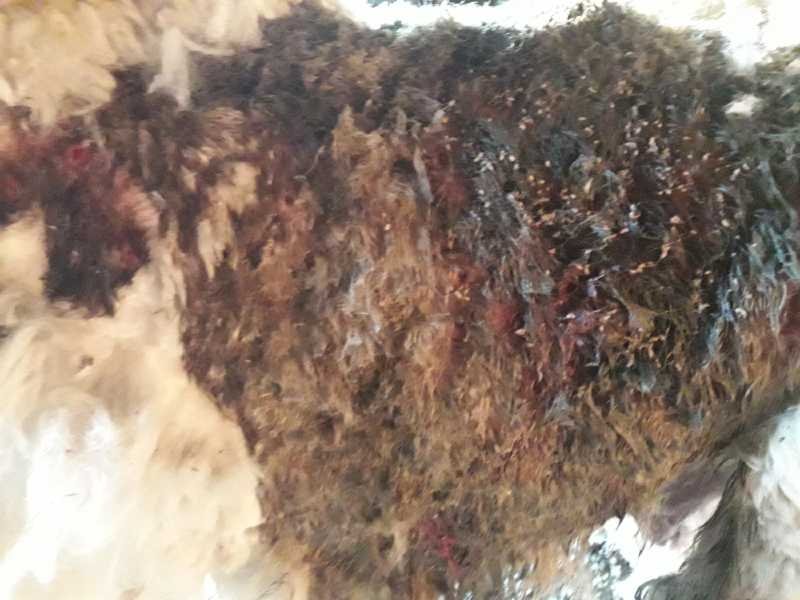Sod off and die, flies.
Written by Ian Roper BVetMed MRCVS (first published in South East Farmer)
Few things get to me like flies do. They seem to have an arrogant, brazen, vindictive attitude; as if to say – “I’m here to make you miserable, and there is nothing you can do about it”. More annoyingly, they increasingly seem to be right about that! To start with, there is simply the stress and irritation they instil, just by the mere presence of a single fly, and worse if they land on you. I cannot imagine then how much more terribly our livestock must feel affected given the vast numbers that can sometimes gather around a herd or flock. Then there are the biting varieties, just to double the stress. We know that this alone can reduce the productivity of a livestock unit, as yield, growth and fertility may all be affected. Welfare is certainly compromised, where flies are not well managed.
As a vet, flystrike (or myiasis) remains the condition I most dread to see. It’s almost a euphemism, for being literally eaten alive. Predominantly an issue for sheep, but not exclusively. It takes hold so rapidly, so unless caught early, frequently leads to euthanasia. The signs start very subtly, but progress inevitably. Above all else pay close attention to: scratching, tail shaking or ‘air-nibbling’, teeth-grinding, inappetence, and dullness. On individuals, look for darker moist areas of fleece – which when parted will reveal the presence of maggots feeding on the flesh below. You can then see anything from raw areas oozing serum like a graze, through to full thickness wounds with cavities full of maggots below the skin. This will lead to toxaemia, and death. Time is severity. Even the most experienced farmers have animals affected sometimes, but the responsibility is to catch it early and treat immediately. You can use the weather patterns to predict the highest risk periods. When a warm day follows a wet spell, you know to be on the look-out. When these occur, I would recommend at least twice daily inspection of even grazed sheep.
Darker moist areas of fleece – which when parted will reveal the presence of maggots feeding on the flesh below

Flies spread bacterial disease, including New-forest eye disease, caused by Moraxella bovis, and summer mastitis, which can lead to severe udder damage and therefore a higher chance of culling, as well as the impact on yield and welfare. A different type of fly, the midge is also something we would like to control. Known to be vectors of viral diseases such as Bluetongue which remains a present threat from Europe, and Schmallenberg which has infected a number of animals in the UK in 2020 on confirmed testing.
For all these reasons, chemical control of flies is an important part of our strategy. Though I commonly find that reports on the effectiveness of the products, or the duration of satisfactory effect, seem to dwindle year on year. I think there are two or three reasons for this. Resistance amongst flies to these chemicals is known to occur. Just as we have seen the effectiveness of wormers and certain antibiotics reducing with the level of use, fly control products are also vulnerable to this effect. And for the same reason, we all need to work as a community to reduce our reliance on them, which is certainly not easy, so we must work on what is in our control. Another reason for a sense of reduced efficacy is the impact of bad weather in the period after dosing. With spells of rain throughout the summer seemingly the norm these days, reapplications may need to be considered sooner than intended. Thirdly, because so much is not in our control, it is important to ensure we are dosing according to the data sheet, in terms of dose, weight of animal, application pattern and therefore use of the right nozzle. Please be aware of the impact on withdrawal periods with any variation from the data sheet, and speak with your vet to confirm.
Another, relatively new approach to reducing fly control is to release a population of “Friendly Flies”. Species of parasitic wasp which specifically target biting and nuisance flies and can suppress their breeding colonies. Beneficial insects in the environment are not affected. This can be a cost-effective strategy and has the benefit of treating the entire region, not just those flies directly on the animals. It can be even more so if a group of neighbouring farmers act together. However, it should be used in conjunction with other control mechanisms to ensure optimum performance. Ultimately, we can do something about this unrelenting issue, and do not need to accept it as uncontrollable, or something outside of our responsibility.
- 1st April 2021
